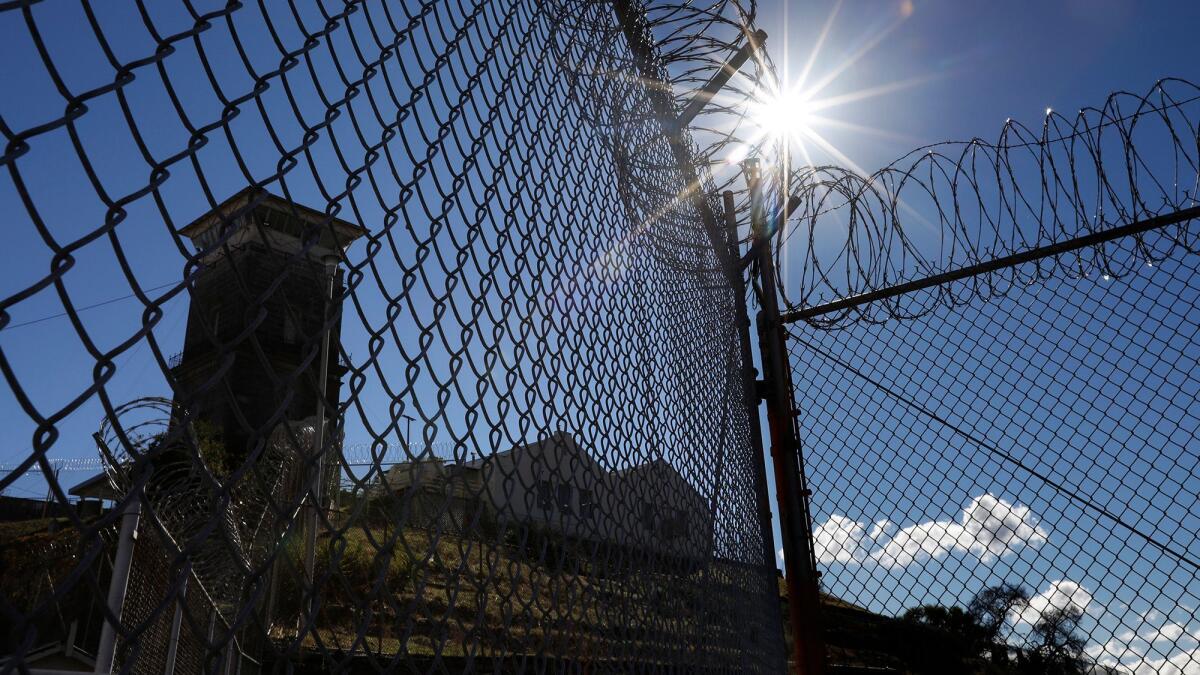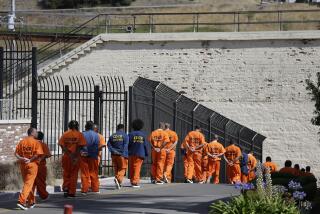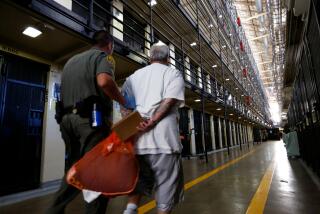Column: How a list of 23 crimes now dominates California’s debate over prison punishment

California has a long history of mixing crime and punishment with raw politics. But outrage doesn’t always translate into coherent policy, and unintended consequences can spark even more public anger.
With that in mind, consider the last two years of debate over what should, and should not, be a “violent” crime.
That debate begins with the index of crimes in section 667.5 of the California Penal Code. The list was first enacted in 1976, and has been tinkered with so many times it’s hard to say whether it’s a fair representation of the most heinous crimes.
Column: There’s no timetable on when Gov. Jerry Brown picks a final Supreme Court justice »
Here’s why that matters: The list is now a key part of determining which California prison inmates are eligible for early parole under Gov. Jerry Brown’s 2016 ballot measure, Proposition 57. A legal fight over how to interpret the ballot measure could become a potent political issue.
Brown signed the law creating the original list of violent crimes during his first tour of duty as governor. It’s since been amended or expanded 38 times, the last effort in 2014. Eight specific offenses or crime categories were in the original version. Now, there are 23 crimes. The list almost doubled in size in just the five years between 1988 and 1993.
So what’s included? Some violent crimes are relatively straightforward — murder, attempted murder, voluntary manslaughter, robbery, kidnapping. (Kidnapping, interestingly, was dropped from the list in 1977 with no noteworthy explanation and added back in 1991.) Some additions, like the inclusion of carjacking in 1993, were sparked by news events. A prosecutor told The Times that year that classifying the crime as “violent” would give “local district attorneys another weapon in their arsenal to attack this epidemic.”
Voters opted to tweak the law twice, making substantial changes that weren’t well publicized in those elections. Proposition 21 in 2000 removed the long-standing focus on specific kinds of robberies — those in someone’s home and involving a “deadly or dangerous weapon” — and instead made “any robbery” a violent crime. In 2006, voters added more definitions of sex crimes.
Coverage of California politics »
And yet other crimes have long been sliced relatively thin. Only specific circumstances in the case of rape or first-degree burglary are on the list of violent crimes. It’s doubtful, as a result, that the 23 offenses cover everything the average Californian would think of as being “violent.”
This might not be a pressing issue if not for the changes brought on by Brown’s 2016 ballot measure, which expanded parole opportunities to those serving time for a “nonviolent felony offense.” That phrase is brand new, and Proposition 57 placed the term in the California Constitution.
It’s unclear, though, whether “nonviolent felony offense” is just another way of saying any crime that’s not on the list of violent crimes. A Sacramento Superior Court judge last month rejected that idea. At the same time, the judge ruled that some convicted sex offenders — who the Brown administration has deemed ineligible under Proposition 57 — should be considered for release because they weren’t convicted of one of the 23 crimes.
Judge Allen Sumner’s ruling seemed to hint that current law is full of knots crying out to be untangled. He wrote that “it is by no means clear what the voters understood, or intended, the term ‘nonviolent’ to mean.”
The simplest way to clear that up would seem to be a comprehensive revision of the list of 23 violent crimes. And yet victims rights advocates want to create a new list, 51 crimes in all, that would disqualify someone for parole. How — or if — the two lists would work together is unclear. Few things are simple in the politics of criminal justice.
Follow @johnmyers on Twitter, sign up for our daily Essential Politics newsletter and listen to the weekly California Politics Podcast
ALSO:
Updates on California politics
More to Read
Get the L.A. Times Politics newsletter
Deeply reported insights into legislation, politics and policy from Sacramento, Washington and beyond. In your inbox three times per week.
You may occasionally receive promotional content from the Los Angeles Times.






